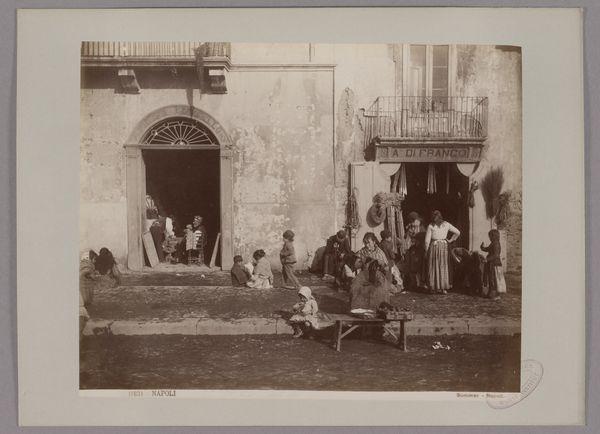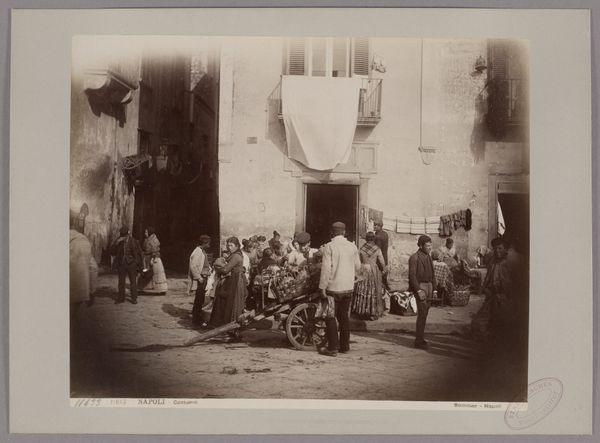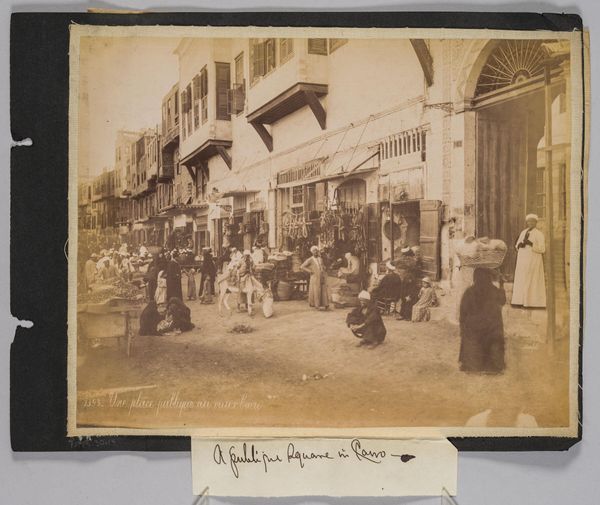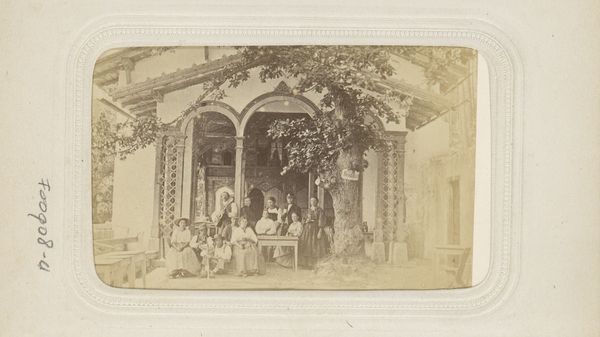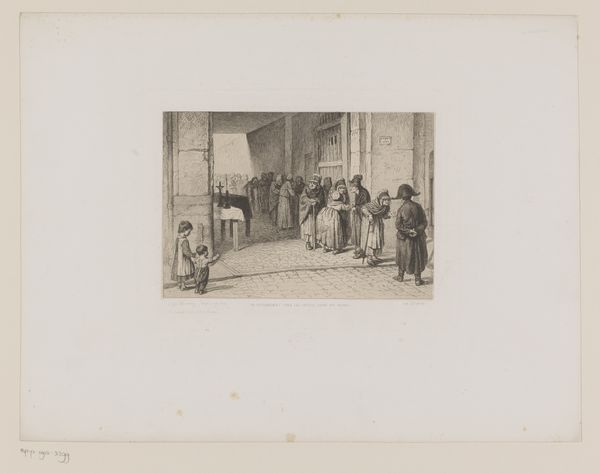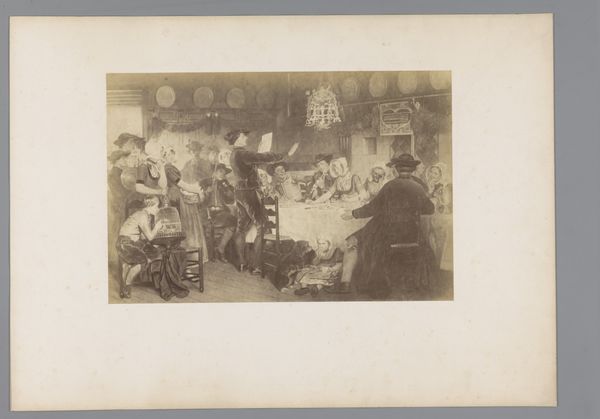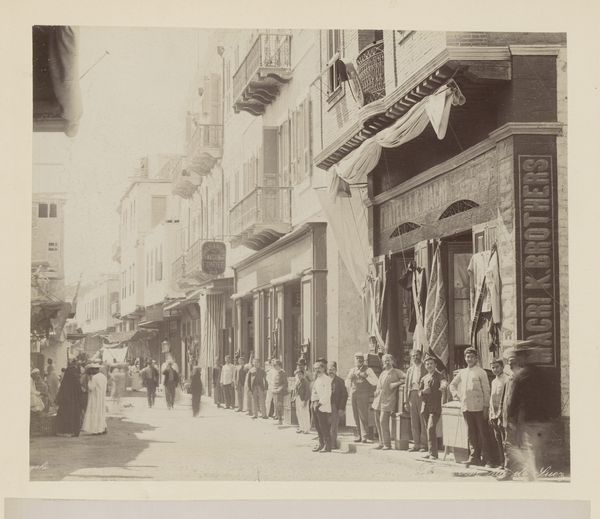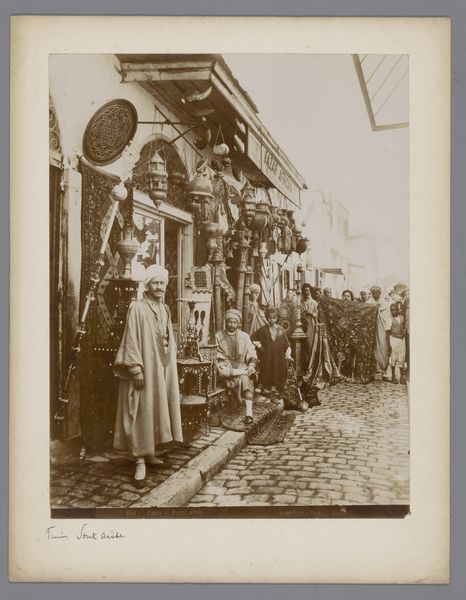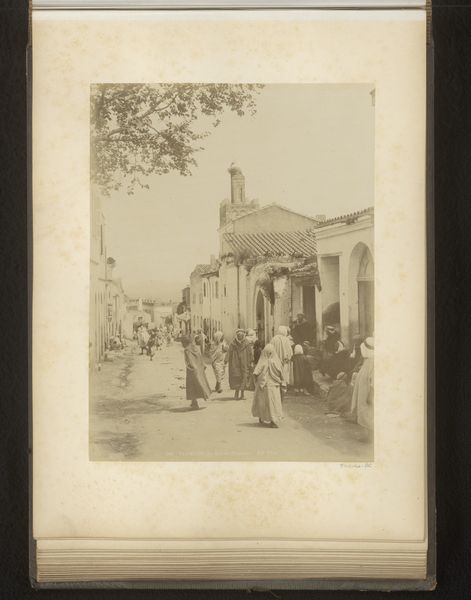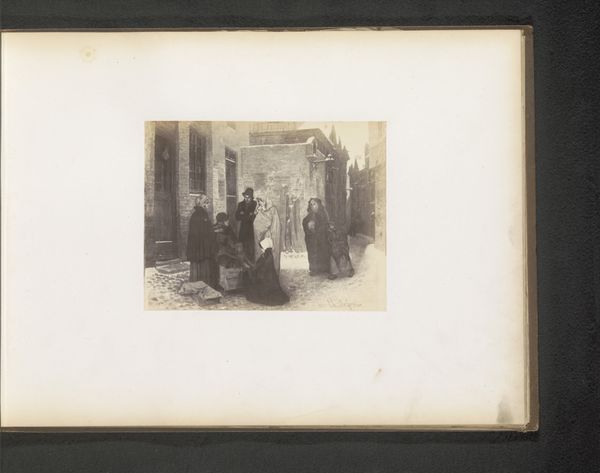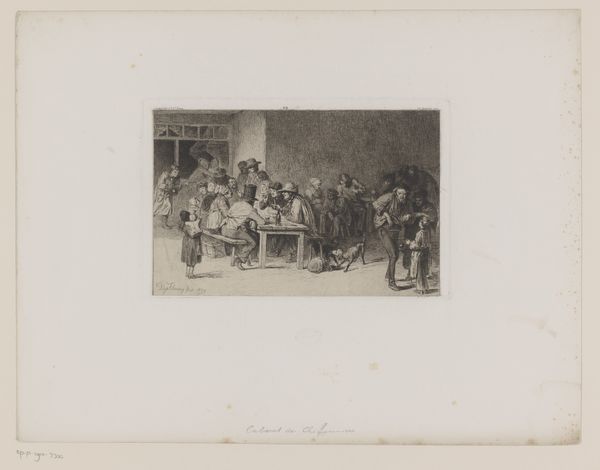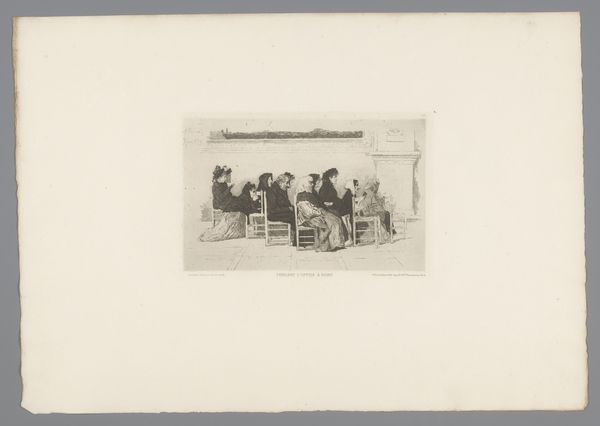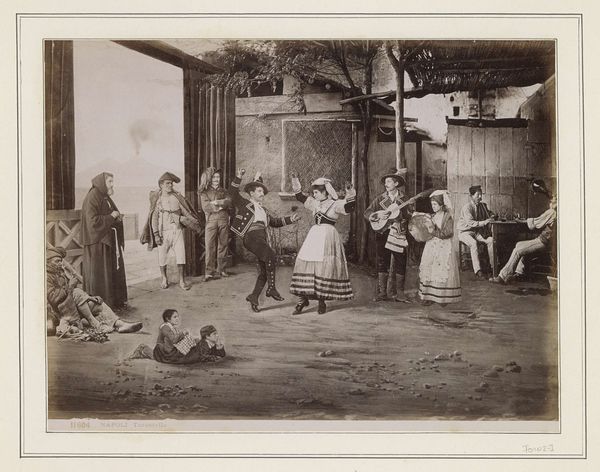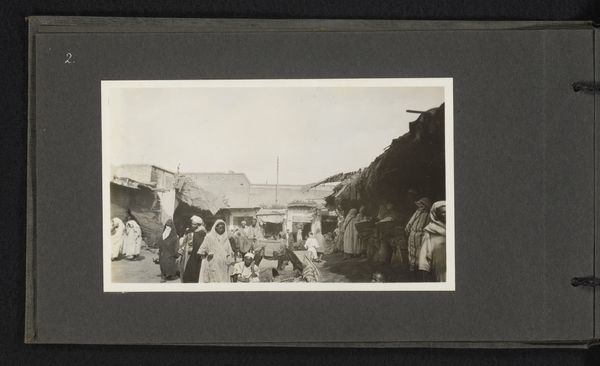
paper, photography, gelatin-silver-print
#
portrait
#
17_20th-century
#
16_19th-century
#
photo restoration
#
landscape
#
paper
#
street-photography
#
photography
#
gelatin-silver-print
#
genre-painting
#
realism
Copyright: Public Domain
Curator: Let's focus on Hugo Erfurth’s "Contact Print I (left)" dating from 1904, a gelatin-silver print currently held at the Städel Museum. Editor: My immediate impression is one of texture and layered lives. The stark light feels appropriate, the cobbled streets look rough to the touch. So much humanity caught on this one surface. Curator: I’m intrigued by Erfurth's choice of this particular subject matter. The everyday street scene, the social fabric… this print feels very intentional. The cart, loaded with vessels - what looks like possibly produce ready for sale - signifies not just commerce but also the physical labor required for survival in this place. Editor: Absolutely. I'm drawn to the imagery of the cart, it could symbolize sustenance. Those pots may even imply female energy and creation of life, referencing domestic and economic contributions. Curator: I would agree that we see symbols of the everyday here. Erfurth emphasizes process: the materiality of daily existence through this record of working-class individuals, contrasting the traditional boundaries between high art photography and documentary record. How significant that a technique of early photography renders labor itself into such a permanent form. Editor: To take that thought further, I see how clothes hanging out to dry might be representative of daily life, an attempt at respectability. It could act almost as an emotional counterpoint to the activity at the cart that is more about toil than cleaning and tending to the household. It is all there in that background Curator: The silver gelatin printing process itself highlights his engagement with industrial methods to produce these portraits of industry and humanity. Think about the chemical processes that produced these effects that give us the gritty surfaces of life we see rendered on a sheet of paper. Editor: It's powerful to think of how that silver, responding to light, then carries so much representational weight across over a century. It also allows our cultural memory of a period to come forward and perhaps even be shaped by the image. Curator: Indeed. Studying "Contact Print I" encourages one to reflect upon the many methods that constitute art, as well as their historical and cultural relevance. Editor: It leaves one thinking about the passage of time and the preservation of social narratives embedded within these seemingly simple scenes.
Comments
No comments
Be the first to comment and join the conversation on the ultimate creative platform.
